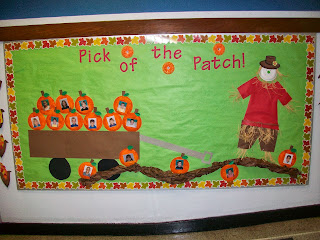Search Our Blog!
Thursday, December 5, 2013
Tuesday, October 22, 2013
Monday, October 14, 2013
Thursday, September 19, 2013
Math
Bridges in Mathematics, second edition, is a comprehensive K–5 mathematics curriculum that equips teachers to fully implement the Common Core State Standards for Mathematics in a manner that is rigorous, coherent, engaging, and accessible to all learners. The curriculum focuses on developing students’ deep understandings of mathematical concepts, proficiency with key skills, and ability to solve complex and novel problems. Bridges blends direct instruction, structured investigation, and open exploration, and taps into the intelligence strengths of all students by presenting material that is as linguistically, visually, and kinesthetically rich as it is mathematically powerful.
Bridges Activities
A Bridges classroom features a combination of whole-group, small-group, and independent activities that are problem centered. Kindergarteners engage in three major kinds of activities: Problems & Investigations, Work Places, and Assessments.
Problems & Investigations
Problems & Investigations are whole-group activities that also incorporate periods of independent and partner work. They often begin with a problem posed by the teacher, followed by time for students to think independently, work for a period of time, and talk in pairs before reconvening to share and compare strategies and solutions as a whole class.
Work Places
Work Places are engaging, developmentally appropriate math stations that offer ongoing practice with key skills. Many Work Places are partner games, but some are independent activities or more open-ended partner work. Work Places are always introduced and practiced as a whole class, after which students have opportunities to repeat the Work Place over a period of weeks. Work Places include suggestions that enable the teacher to differentiate each activity to address students’ needs for additional support or challenge.
Number Corner
Number Corner is a skills program that is an essential part of the Bridges curriculum, but which can also be used to supplement any elementary math curriculum. This collection of quick daily skills activities make use of a classroom display featuring a calendar, growing collections, number lines, and more. The display engages students and contributes to a math-rich classroom environment.
Mathematical Emphasis
The mathematics in Kindergarten Bridges fully address the Common Core State Standards (CCSS) for Kindergarten. The program is aligned to the Critical Areas of Focus and Major Instructional Shifts intended by the authors of the CCSS, and it weaves together the standards for content and practice in ways that support student learning. Kindergarten Bridges also features key visual models that deepen students’ mathematical learning, while providing developmentally appropriate ways for them to employ the mathematical practices as they engage with new mathematical content.
Content
Bridges develops children’s mathematical thinking and reasoning abilities through age-appropriate problems and investigations in the areas of number, operations, algebraic thinking, measurement, data, and geometry. Some of these problems and investigations grow out of ventures into everyday life—reading stories, playing games, drawing pictures, building structures, and making collections—while others delve more deeply into the world of mathematics itself. Students are encouraged to explore, develop, test, discuss, and apply ideas: to see mathematics as something that is fluid, vibrant, creative, and relevant. Kindergarteners focus intensively on the two critical areas specified by the Common Core State Standards for Mathematics in Kindergarten: 1) representing and comparing whole numbers; 2) describing shapes and space. Bridges Kindergarten includes eight units of study, with 20 sessions per unit. Six of those eight units are devoted to number and operations. They help students learn to use numbers, including written numerals, to represent quantities and solve problems; count out a given number of objects; compare sets or numerals; and model simple joining and separating situations with objects, fingers, words, actions, drawings, numbers, and equations. The other two units focus on geometry. They invite students to describe and analyze the attributes of shapes in the world around them; find, count, draw, build, and compare shapes; and fit shapes together to make other shapes and complete puzzles.
Friday, April 12, 2013
Sunday, March 24, 2013
March is Reading Month Bulletin Board
Our theme for March is Reading Month is Story Laboratory: Experiment with a good book! See how we changed ourselves into Mad Scientists for the occasion! : )
Thursday, January 10, 2013
Wednesday, January 2, 2013
Story Libraries Online
I want to share some links with you where you can go and read books online or have them read to you! They are also listed in the Educational Websites section. After we get back from Christmas vacation, I will introduce them to the kids and they will be able to visit them at the computer station at work stations time.
Barnes & Noble Online Storytime (Free)
Storyline Online (Free)
TumbleBooks Library (Requires a membership)
We Give Books Library (Free but have to create an acount)
Subscribe to:
Posts (Atom)










